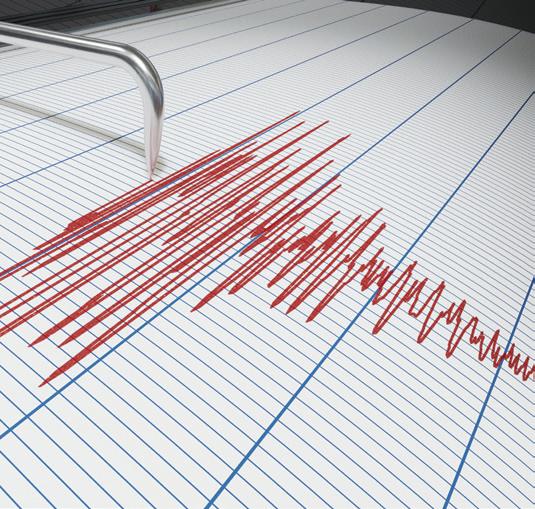
6 minute read
Wildfire-Season Tips
Take simple steps to protect your property from wildfire.
TO PROTECT YOUR PROPERTIES
Courtesy of Yardi Breeze
Wildfire season can be a tough time for property managers, owners, residents, businesses and virtually everyone who lives in affected areas. And it’s not just California and the American West that are experiencing a rate and intensity of wildfires like never before.
Whatever the causes (e.g., climate change, forest management), property managers need to prepare their properties for natural disasters including wildfires. Here are some tips to help protect and fireproof your property.
1. CREATE A FIRE-RESISTANT, DEFENSIBLE SPACE AROUND THE PROPERTY
If you live within one of California’s State Responsibility Areas, you are required by law to create and maintain a “defensible space” around your property. This space must be clear of any natural growth or brush that could facilitate the spread of a wildfire.
Defensible spaces can be a good idea, even if you don’t live in California or you’re not required to make them. If fire season is a problem in your region, chances are it’s a bigger problem than ever before. Consider doing everything you can to protect your properties and the people who live there. [Editor’s note: In Contra Costa and Alameda counties, property owners are responsible for managing their vegetation to meet fire district requirements. Check with your local fire department for details.]
2. MAKE WATER SOURCES AVAILABLE TO FIRST RESPONDERS
Want to help first responders protect your property in the event of a fire? Connect a garden hose into available water lines, and leave them connected during fire season. Fire departments will use any tools at their disposal.
Hydrants, ponds and pools can be used to fight fires. Make sure first responders have easy access to these resources at all times.
Also, the curb around hydrants and fire access areas should be kept freshly painted so it’s clearly defined and easy to see.
3. KEEP ROOFING & GUTTERS CLEAR OF DEBRIS
As part of your fall maintenance, gutters, roofing and lawns should be free of obstructions such as leaves and dead grass.
Gutter-cleaning may sound straightforward, but it’s surprisingly dangerous work. Ladders can slip or people can fall, especially when you or your maintenance team is leaning and reaching to clear out clogged gutter systems. The job can be kept safer with high-quality cleaning tools and ladder stabilizers. Even so, a professional contractor may be worth the additional cost of labor.
4. USE THE RIGHT ROOFING MATERIALS
Do you know the fire rating for your property’s roofing material? Roofs are classified as Class A, Class B, Class C or unrated. Class A materials are the most fire-resistant, and unrated materials offer the least amount of fire protection.
Ahead of wildfire season, it’s important to protect your property with Class A materials. The rating could apply to several types of material: • Concrete • Clay • Fiberglass asphalt • Metal • Wood (if treated to meet Class A requirements)
A professional roofing service can provide the best consultation and options for your property.
5. CREATE AN EXIT PLAN FOR YOUR TEAM & RESIDENTS
One of the best ways to protect your community is to provide your residents with an exit plan in case of an emergency. This is something you can easily text or email via Yardi Breeze, which ensures the information never gets lost (and is easy to resend). • Provide wildfire-season evacuation routes to nearby emergency shelters • Ask residents to close windows and doors before evacuating • Establish special roles for your team so residents know whom to contact with questions • Practice fire drills with your office • Make sure emergency exit routes are posted around your property as required by law

6. COVER YOUR ASSETS WITH A DWELLING FIRE POLICY
Breeze makes it easy for you to provide renters insurance. Many property managers are able to sign renters up with its preferred provider, ResidentShield, during the online lease signing. This type of insurance does not cover your property from wildfire damage, but it does cover your residents’ belongings. It also provides temporary living expenses if the residence is uninhabitable due to a covered loss. *What about homeowners insurance?
It’s a mistake to try to cover your property with homeowners insurance. Owner-occupants, whom homeowners insurance is meant for, face different risk factors (and pricing) than rental property owners. Only the right dwelling fire (aka landlord) insurance policy can cover your property for wildfire damage. Make sure you’re properly covered so you never have to worry about facing a denied claim.
Disclaimer: This article is meant for informational purposes only and does not constitute nor replace legal counsel. Consult a professional service to determine the fire readiness of your properties. And please approach fire safety with extreme caution. Wildfires that are hot enough and/or move quickly enough can easily thwart your best preparation efforts.
Source: yardibreeze.com/blog/2020/10/wildfire-season-tips-protect-fireproof-your-properties, published October 20, 2020
PREPARE FOR EARTHQUAKES
All buildings in earthquake territory should be constructed with safety in mind. That includes adding extra support to cripple walls (walls that separate crawl spaces from the rest of the house), which can move during an earthquake. Other steel supports should be added to walls as determined by engineers and professional contractors.
Your residents can help themselves, too. They can secure dressers, bookshelves and TV stands to walls. Any furniture that comes with the unit should be designed with earthquake safety in mind. Encourage your residents to do the same with their personal belongings.
As with other disasters, residents should follow emergency instructions. If a property is damaged, communicate your plan of action and instruct residents not to return home until it is safe. [Editor’s note: Visit Earthquake Country Alliance, Bay Area for more tips: earthquakecountry.org/bayarea/] Source: yardibreeze. com/blog/2019/07/how-prepare-your-properties-natural-disasters, published July 12, 2019


NATURAL DISASTER EMERGENCY CHECKLIST
Below are a few simple safety precautions that apply to most natural disasters. Communicate them to your residents via email or text. Encourage your residents to:
• Have emergency food and water for three to seven days because the first 72 hours after a disaster are the most important for safety and survival (it should be portable, in case they need to relocate) • Put together an emergency kit that includes first aid • Stock flashlights with extra batteries • Keep extra blankets, gloves, coats, etc. • Invest in an emergency radio • Come up with an emergency meeting point (not in their residence) for immediate family members, in case they can’t communicate with each other and can’t go home • Ask an out-of-state friend or family member to be an emergency contact that can help coordinate with everyone
Source: yardibreeze.com/blog/2019/07/how-prepare- your-properties-natural-disasters, published July 12, 2019 LOCAL FIRE AND DISASTER PREP RESOURCES
Cal Fire: fire.ca.gov | readyforwildfire.org Contra Costa County Fire Protection District: cccfpd.org | cccfpd.org/ResidentsWildlandFireGuide Contra Costa County Community Warning System: cwsalerts.com Alameda County Fire Department: fire.acgov.org Alameda County Emergency Preparedness Page: acgov.org/ready AC Alert: acalert.org










